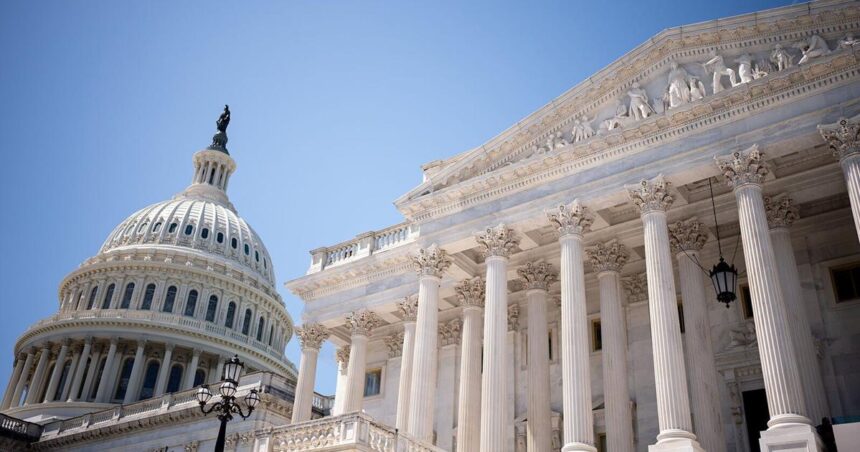Tim Sheehy, the Republican candidate seeking to unseat Democratic Sen. Jon Tester of Montana and give U.S. Senate control to the GOP, is campaigning on what he calls Tester’s and Democrats’ “extreme” position on abortion.
In a televised debate June 8, Sheehy accused Tester and Democrats of voting for “elective abortions up to and including the moment of birth.” That statement prompted Tester to respond: “To say we’re killing babies at 40 weeks is total BS.”
People are also reading…
Sheehy has made this accusation on his campaign website, which says, “Jon Tester supports elective abortion on demand up until the moment of birth. Think about that again: Jon Tester supports aborting a healthy, full-term baby the day before it’s due. That is the extreme position here.” Similar statements have been made in the campaign’s social media posts.
Painting the Democratic candidate with, in Sheehy’s words, an “extreme” position on abortion is a familiar conservative campaign strategy and campaign talking point this election cycle. But how does it hold up?
Some Recent History
Asked for evidence to support Sheehy’s accusations, Sheehy’s campaign spokesperson, Katie Martin, said the Republican candidate was referring to Tester’s vote for the Women’s Health Protection Act, which failed to pass the Senate in 2022. She cited the bill’s provisions that said health providers and patients would have the right to perform and receive abortion services without certain limitations or requirements impeding access.
Anti-abortion advocates say the measure, which has been reintroduced in the current Congress, would create a loophole eliminating any limits to aborting a fetus later in pregnancy. And, rather than define when a fetus is viable during pregnancy, the bill would leave the question of viability to the health provider, who is financially motivated to perform abortions, according to Susan B. Anthony Pro-Life America, a nonprofit group supporting anti-abortion candidates, including Sheehy.
“It would impose no-limits abortion on demand in all 50 states at any point in pregnancy,” said Marjorie Dannenfelser, president of SBA Pro-Life America.
In 2022, the legislation failed two votes in the Senate before the U.S. Supreme Court’s Dobbs v. Jackson Women’s Health Organization decision removed federal protections for abortion access and left the issue to the states to decide. Tester voted for the measure both times, but the bill failed to advance after votes of 46-48 and 49-51.
Alina Salganicoff, a KFF senior vice president and director of the nonprofit’s Women’s Health Policy Program, said nothing in the Women’s Health Protection Act supports an abortion up to the moment of birth. Rather, the legislation would allow a health provider to perform abortions without obstacles such as waiting periods, tests deemed medically unnecessary, unnecessary in-person visits, or other restrictions imposed by states.
The bill would explicitly allow an abortion after a fetus is viable when, according to the legislation, “in the good-faith medical judgment of the treating health care provider, continuation of the pregnancy would pose a risk to the pregnant patient’s life or health.”
“This is not abortion on demand until the moment of birth,” Salganicoff said. “Even if politicians and anti-abortion activists make this claim, there are no clinicians that provide ‘abortions’ moments before birth.”
Besides the Women’s Health Protection Act, the Sheehy campaign cited Tester’s opposition to “born-alive” legislation meant to protect babies who survive botched abortions.
“At what week does he think it’s inappropriate for medical providers to perform an abortion?” Martin said of Tester. “That would clear up his stance on the issue. Based on his voting record, it suggests he does, in fact, support abortion on demand up until the moment of birth.”
In 2002, Congress passed a “born-alive” law that gave legal protections to infants who survive abortions. A stalled 2022 bill sought to expand that law to add criminal penalties to health professionals who do not take steps to preserve the life of any child born. Montana voters rejected a similar ballot question in 2022.
Tester was elected to the Senate four years after the first bill passed and a vote was not taken on the 2022 measure.
Looking at the Data
Instances of fetuses surviving abortions are rare. So are abortions performed later in pregnancy: Just 1% of all abortions in the U.S. happen at or after 21 weeks of gestation. (The percentage of abortions that occur when the fetus is presumed to be viable, 24 weeks or later, is presumably lower, but the Centers for Disease Control and Prevention does not break out abortion rates for that period.)
An analysis by SBA Pro-Life America’s research arm, the Charlotte Lozier Institute, concluded that 6% of abortions performed in 2020, or an estimated 55,800 abortions, happened at or after 15 weeks of pregnancy.
“Most late-term abortions are elective, performed on healthy women with healthy babies for the same reasons given for first-trimester abortions,” Dannenfelser said.
SBA Pro-Life cites abortions at 15 weeks and later because that is the stage of development at which a fetus can feel pain, according to the group. That is the same rationale behind Republican Sen. Lindsay Graham’s 15-week abortion ban legislation introduced in 2022.
But the American College of Obstetricians and Gynecologists says “the science conclusively establishes” that a fetus does not have the capacity to feel pain until 24 or 25 weeks.
“Every medical organization that has examined this issue and peer-reviewed studies on the matter have consistently reached the conclusion that abortion before this point does not result in the perception of pain in a fetus,” according to the OB-GYN medical group.
Katrina Kimport, a professor in the University of California-San Francisco’s Department of Obstetrics, Gynecology & Reproductive Sciences, said “born-alive” laws are trying to regulate something that doesn’t happen.
Kimport, whose research involved interviewing 30 people in 2018 who had abortions after 24 weeks of pregnancy, and 10 more from 2021 to 2022, also criticized Sheehy’s use of “elective abortion.” In her view, that terminology reflects a political colloquialism that’s come to mean an abortion that is optional. That’s different from the medical definition, she said, in which an elective procedure is one that may be necessary but is not an emergency and can be scheduled for a particular date, such as knee surgery.
Women have abortions later in pregnancy either because they find out new information or because of economic or political barriers, Kimport said.
“I have never spoken to somebody whose abortion decision was not informed by deep thought and consideration,” she said.





